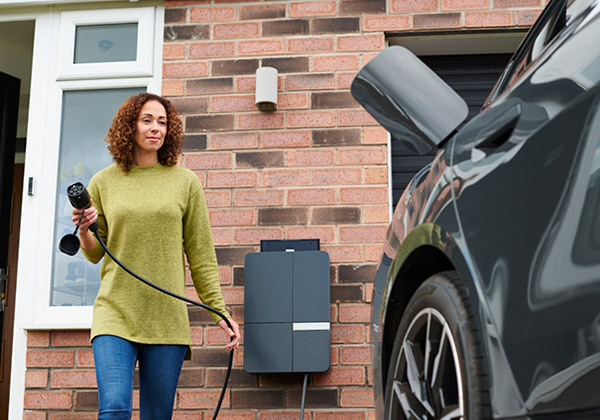Helping Australia transition to a reliable, low carbon electricity system
Statements
- New standard added to frame the AS/NZS 4755 suite of standards covering demand response capabilities and supporting technologies for electrical products
- The AS/NZS 4755 suite provides a way for Australia to optimise the security and efficiency of its electricity networks
- Implementation may reduce the risk of blackouts experienced during peak demand events
In March 2017 Standards Australia published AS/NZS 4755.1, Demand response capabilities and supporting technologies for electrical products – Part 1: Demand Response Framework and requirements for Demand Response Enabling Devices (DREDs).
The management of both peak demand spikes during extreme weather and electricity system stability due to the highly variable nature of renewable energy generation are now critical to the security of Australia’s electricity systems. The AS/NZS 4755 suite of standards is recognised globally as a practical means to help address these dual threats to the security and efficiency of low carbon electricity systems.
As a world first, the suite of standards defines demand response modes for air conditioners, electric boosted hot water heaters, swimming pool pumps, and battery energy storage systems. Customers with AS/NZS 4755-compliant appliances can choose to participate in utility programs that may make the use of appliances more attractive to a consumer.
Part 1 of the suite supports the entire AS/NZS 4755 architecture and outlines how a common Demand Response Enabling Device (DRED) can communicate with a wide diversity of appliance types and brands.
Where customers choose to participate in utility programs, the AS/NZS 4755 series provides a cost-effective way for Australia to better ensure the security and efficiency of its electricity systems.
As the number of participating customers increases, the AS/NZS 4755 capability may be an effective means of reducing the risk of blackouts caused by extreme peak demand or the variable behaviour of solar or wind generation.
Initial work on the AS/NZS 4755 standards commenced following summer electricity supply problems driven by extreme air conditioner peak demand.
Chair of the Australian and New Zealand committee responsible for developing the standard, Mark Paterson, said he was pleased to see this important capstone of the series come to fruition.
“The publication of this entire suite of standards has only been possible through the tireless efforts of appliance manufacturers, electricity networks, CSIRO, engineering consultants and community stakeholders. Recognising the critical importance of electricity system security and efficiency, the work has been supported by Commonwealth government funding. The result is a suite of standards that support new energy innovations for customers and accelerate our secure, cost-effective transition to a low carbon electricity future.”
Standards Australia CEO Dr Bronwyn Evans added that “the standards process offers a key platform for energy stakeholders to come together to address peak energy demand issues”.

- New standard added to frame the AS/NZS 4755 suite of standards covering demand response capabilities and supporting technologies for electrical products
- The AS/NZS 4755 suite provides a way for Australia to optimise the security and efficiency of its electricity networks
- Implementation may reduce the risk of blackouts experienced during peak demand events
In March 2017 Standards Australia published AS/NZS 4755.1, Demand response capabilities and supporting technologies for electrical products – Part 1: Demand Response Framework and requirements for Demand Response Enabling Devices (DREDs).
The management of both peak demand spikes during extreme weather and electricity system stability due to the highly variable nature of renewable energy generation are now critical to the security of Australia’s electricity systems. The AS/NZS 4755 suite of standards is recognised globally as a practical means to help address these dual threats to the security and efficiency of low carbon electricity systems.
As a world first, the suite of standards defines demand response modes for air conditioners, electric boosted hot water heaters, swimming pool pumps, and battery energy storage systems. Customers with AS/NZS 4755-compliant appliances can choose to participate in utility programs that may make the use of appliances more attractive to a consumer.
Part 1 of the suite supports the entire AS/NZS 4755 architecture and outlines how a common Demand Response Enabling Device (DRED) can communicate with a wide diversity of appliance types and brands.
Where customers choose to participate in utility programs, the AS/NZS 4755 series provides a cost-effective way for Australia to better ensure the security and efficiency of its electricity systems.
As the number of participating customers increases, the AS/NZS 4755 capability may be an effective means of reducing the risk of blackouts caused by extreme peak demand or the variable behaviour of solar or wind generation.
Initial work on the AS/NZS 4755 standards commenced following summer electricity supply problems driven by extreme air conditioner peak demand.
Chair of the Australian and New Zealand committee responsible for developing the standard, Mark Paterson, said he was pleased to see this important capstone of the series come to fruition.
“The publication of this entire suite of standards has only been possible through the tireless efforts of appliance manufacturers, electricity networks, CSIRO, engineering consultants and community stakeholders. Recognising the critical importance of electricity system security and efficiency, the work has been supported by Commonwealth government funding. The result is a suite of standards that support new energy innovations for customers and accelerate our secure, cost-effective transition to a low carbon electricity future.”
Standards Australia CEO Dr Bronwyn Evans added that “the standards process offers a key platform for energy stakeholders to come together to address peak energy demand issues”.

Email:

Email:


